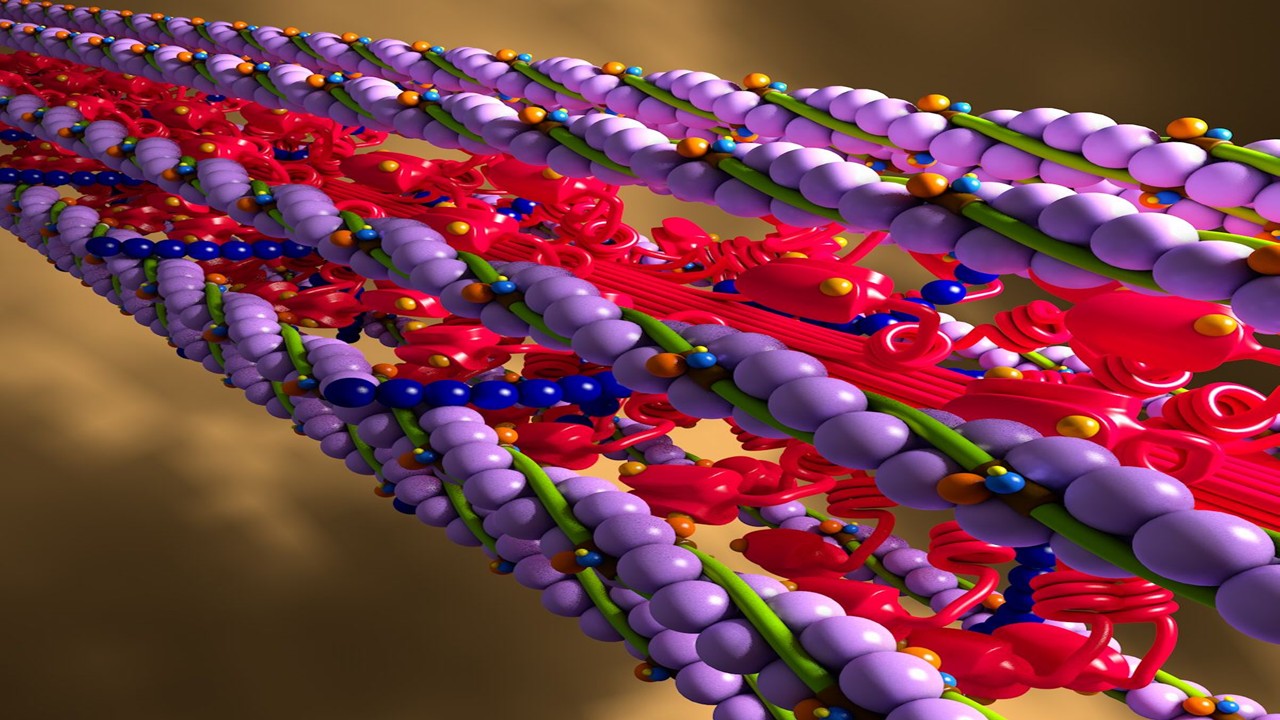The Biology of Blame: Why Disease Causality Matters
In clinical medicine, the identification of cause-effect relationships between diseases isn’t merely a philosophical exercise—it’s a practical imperative. Knowing that insulin resistance leads to type 2 diabetes, for instance, allows intervention at a juncture that prevents irreversible metabolic derailment. But establishing such causality has long relied on cohort studies: resource-intensive, time-consuming, and often limited by ethical or logistical constraints. The field has craved a less cumbersome method, one rooted in the molecular landscape that already encodes much of our pathophysiology. The possibility that we can infer disease causality not through decades of tracking patients, but through bioinformatic triangulation of genomic, clinical, and biochemical data, reframes how we understand comorbid conditions.
Causality between diseases, distinct from mere statistical association, requires both directional certainty and mechanistic insight. It is one thing to observe that hypertension coexists with macular degeneration; it is quite another to mechanistically implicate the former as a driver of the latter. Such inference demands a rigorous methodology that filters out spurious correlations and emphasizes biological plausibility. Traditional studies stop at association because directionality is elusive. The innovation proposed here is to formalize that directionality—not just observe connections but to define arrows.
The framework outlined in this study acknowledges that causality must emerge from a synthesis of multiple domains. Genetic commonalities offer clues but can be too broad. Clinical data on prevalence and comorbidity point toward pattern, but not mechanism. It is the integration of these layers—disease-gene relations, patient-level statistics, and pathway-based molecular logic—that sharpens the inference into a signal of causality. It is here that network biology becomes not merely a map, but a dynamic compass.
Establishing such a methodological hierarchy redefines what constitutes evidence in medicine. No longer must we wait passively for patterns to emerge from years of clinical observation. Instead, we can actively simulate and verify disease progressions, guided by biochemical flow and genetic co-expression. This is more than a computational convenience. It is a structural shift in how disease knowledge is curated and deployed.
This new approach creates a feedback loop between discovery and application. Disease prevention becomes anticipatory rather than reactive. Treatment planning evolves from managing comorbidity to severing causal chains. In clinical strategy and drug development, this matters profoundly. When disease A can be shown to cause disease B, the incentive is no longer to merely treat both, but to intercept A before B emerges. That is the power of causal certainty.
Building the Framework: Disease Association as Network Seed
The architecture of causality inference in this study begins with the construction of a Disease Association Network (DAN), the foundational scaffold on which further layers are built. At this stage, relationships are defined through shared disease-protein associations. Two diseases that interact with the same protein—or proteins—are presumed to be biologically associated. This protein-centric approach is powerful because it reflects the biochemical commonality underlying seemingly disparate conditions. If two diseases co-opt the same molecular toolkits, then their entanglement in the body’s physiology is more than coincidental.
Each node in DAN represents a disease, and each edge captures the presence of a shared protein. The strength of this association is directly proportional to the number of proteins the two diseases share. For example, if both diseases interact with P13K and INSR, then their association score is elevated accordingly. The greater the molecular overlap, the thicker the connection—both literally in the visual network and conceptually in the logic of association. This quantitative granularity distinguishes DAN from previous efforts, such as Goh et al.’s Human Disease Network, by encoding not just binary relationships but relative intensities.
The disease–protein relationships are sourced from PharmDB, which aggregates cross-referenced data from OMIM, CTD, and GAD, among others. This ensures that DAN is not biased by a single database’s curation logic but reflects a comprehensive integration of disease-genomic interactions. The result is a network encompassing over 2,600 diseases and nearly 80,000 unique associations. This scope is crucial—it ensures that rare but biologically significant overlaps are captured alongside more obvious and well-characterized ones.
What DAN provides is a hypothesis space. It does not presume causality, but it does delimit which disease pairs are sufficiently biologically connected to warrant further scrutiny. In network terms, DAN is the adjacency matrix from which higher-order relationships can be derived. Without it, the process of causality detection would be unmoored from biological reality. With it, we begin to prune the disease universe into a tractable set of meaningful interactions.
The limitations of this step are acknowledged in the framework. Disease–protein associations are inherently asymmetric in reliability and often lack functional directionality. DAN is not designed to stand alone. Instead, it sets the stage—a biological filter that ensures subsequent inferences are grounded in molecular plausibility. In doing so, it builds a necessary bridge between systems biology and clinical epidemiology.
Elevating Hypotheses: From Association to Potential Causality
To transition from associative relationships to potential causal ones, the framework leverages clinical prevalence and comorbidity data to construct a Disease Potential Causality Network (DPCN). This second tier of analysis filters the DAN by applying statistical logic: if two diseases occur together more frequently than expected by chance, one may be influencing the emergence of the other. However, co-occurrence alone is insufficient for causal inference. The challenge lies in directionality—discerning whether disease A is a precursor to B or the reverse.
The metric employed here is relative risk (RR), a ratio derived from the prevalence and comorbidity rates of the two diseases in question. For each disease pair, two RR values are calculated—one assuming A precedes B, the other the inverse. The higher value is interpreted as the more probable direction of influence. This comparison generates a scalar known as Potential Causality Strength (PCS), which quantifies the directional pull between disease pairs. PCS is further refined using a ratio-based correction to temper the sensitivity of the metric in cases of small absolute differences between the two RR values.
What emerges is a network that not only suggests that two diseases are related but infers which one is the likely antecedent. This is a subtle but transformative shift. While association suggests correlation, potential causality implies an upstream role—one disease setting the stage for the development of another. By basing this inference on population-level data sourced from HuDiNe’s 13 million patient records, the framework ensures that these directionalities are not artifacts of isolated observations but reflect widespread epidemiological patterns.
Crucially, DPCN respects the inherent uncertainty of its data. The use of the term “potential” is deliberate—it acknowledges that the directionality inferred here has not yet been grounded in biochemical mechanism. It is a probabilistic estimate, not yet a mechanistic conclusion. That humility is baked into the design of the method. The DPCN acts as a sieve, narrowing down candidate causal relationships that will be more rigorously tested in the final stage.
This statistical stage brings the benefits of scalability. Unlike metabolic pathway analysis, which can be limited by data availability and curation complexity, the prevalence and comorbidity data are high-volume and relatively easy to parse. The inclusion of 2604 diseases and over 266,000 comorbidity edges ensures that even rare causal candidates are not overlooked. The challenge then becomes one of interpretation—how to convert these directional tendencies into biochemical certainty.
In this intermediate layer, causality is suggested but not confirmed. It is the bridge between the molecular inference of DAN and the mechanistic rigor of the next step. DPCN does not claim to finalize the causal story, but it does point us where to look. It is a statistical oracle—sometimes cryptic, often illuminating.
Confirming the Arrows: Causality Through Metabolic Pathways
The final and most decisive layer of analysis constructs the Disease Causality Network (DCN), where speculative connections are filtered through the lens of molecular mechanism. Here, causality is no longer inferred from statistical co-occurrence or shared gene markers—it is traced through the directional dynamics of metabolic pathways. This approach grounds the network in biochemistry, converting statistical conjecture into mechanistic certainty.
Each metabolic pathway is viewed as a sequence of gene interactions where disruptions in one part can propagate through molecular circuits to affect downstream components. The idea is simple: if disease A and disease B share a subset of genes, and the unique genes of A exert directional influence over this shared block more than B does, then A likely causes B. This is captured in three analytical steps: the identification of shared gene blocks, the calculation of flow directionality via flow functions, and the resolution of directional dominance via a causality function.
The flow function quantifies influence by mapping how far a gene in a disease-specific set is from the shared block in the metabolic pathway. Genes that act upstream (i.e., exerting influence) have positive values, while downstream genes (i.e., being influenced) score negative. The exponential function penalizes long distances, ensuring that proximal interactions carry more causal weight. This nuanced metric respects the complexity of intracellular signaling, where not all paths are linear and feedback loops abound.
Once directionalities are computed for both diseases in a pair, the causality function compares their flow scores. A positive result indicates that the first disease is upstream of the second, a negative value indicates the reverse. The magnitude of the result reflects causality strength. For example, in a worked example involving insulin resistance and type 2 diabetes mellitus, five shared genes are flanked by unique genes from each disease. The directional analysis reveals that insulin resistance genes more strongly influence the shared block, confirming its upstream role in disease progression.
The use of KEGG pathways to map this network ensures that the directional data are not speculative. These maps are curated and structured to reflect established biochemical knowledge. The inclusion of 468 pathways and over 30,000 genes represents one of the most detailed mechanistic interrogations of disease relationships in current literature. This confirms not only the existence of causality but also its mechanistic plausibility at the systems biology level.
DCN provides what the earlier layers cannot: mechanistic grounding. It transforms associative and probabilistic frameworks into validated arrows. These are not merely conceptual links but molecular paths with clear direction. In the DCN, every edge carries the weight of biological realism, offering a degree of certainty that clinical epidemiology alone can rarely match.
Visualizing the Invisible: Networks of 36 Causally Linked Diseases
By applying the stepwise framework to curated data from MeSH, OMIM, KEGG, HuDiNe, and PubMed, the researchers constructed a refined causal disease network involving 36 diseases. From an initial association pool of over 2,600 conditions, 738,402 associations were distilled into 133,261 potential causal links, which in turn yielded 61 final, validated causal relationships. These disease pairs are more than statistically significant—they are biochemically justified.
The visualization of these relationships offers striking insights. Nodes in the network vary in size depending on their connectivity, and color-coded classification by MeSH disease categories reveals thematic clusters. Hypertension, for instance, emerges as a central hub with multiple downstream effects—including febrile seizures, cataracts, and macular degeneration. This isn’t surprising, but seeing it mapped with molecular justification transforms it from clinical wisdom into visualized causality.
The density of each network layer reflects increasing specificity. The Disease Association Network is vast and diffuse, as expected from a system capturing any shared gene. DPCN is sparser, limited to pairs with strong co-occurrence directionalities. But DCN is the sparsest of all—only 61 edges connecting 36 diseases. This reduction is not a weakness but a reflection of rigor. Each causal link survives multiple filters and is mechanistically corroborated.
This subnetwork functions as both a model and a prototype. It captures not the totality of disease causality but a validated slice that proves the concept. And because each layer is modular, future additions can be made as more data become available. This allows for dynamic updating—a feature conventional cohort studies cannot emulate without restarting the observational clock.
The visual output is as much a scientific artifact as it is a diagnostic tool. One can imagine future clinicians exploring such causal maps to guide patient management strategies. If disease A is known to cause B and a patient presents with early symptoms of A, aggressive intervention could preempt B. This is precision medicine reimagined through network logic.
These 36 diseases may only be a beginning, but they exemplify what is possible when epidemiology and systems biology are made to converse. Here, the invisible arrows of pathogenesis are not only made visible—they are quantified, justified, and visualized with scientific precision.
Rewriting the Lexicon of Risk: Validating the Causal Inferences
Validation of these causal relationships is critical for translational credibility. In the proposed framework, validation occurs through two mechanisms: internal consistency checks using association strength (AS), and external confirmation via published medical literature. Both lines of evidence converge on the robustness of the causal inferences.
In the internal validation, disease pairs with high association strength were disproportionately represented among those with validated causal links. Specifically, pairs in the top half of AS rankings accounted for the vast majority of potential and final causalities. This makes intuitive sense: if two diseases share many proteins, are frequently comorbid, and their genes map directionally in metabolic pathways, they are more likely to be causally linked. But having this confirmed quantitatively reinforces confidence in the network’s structure.
The external validation involved manual curation of literature via PubMed, identifying published evidence for 16 of the 61 final disease pairs. These include well-established relationships such as hypertension leading to seizures, cataracts, and macular degeneration. Each of these has been documented in independent studies, often with supporting biochemical rationale or clinical observation. These confirmations are not cherry-picked anecdotes—they are medical anchors that tie the network’s inferences to the empirical body of biomedical knowledge.
Equally important are the 45 remaining pairs that have not yet been confirmed in the literature. These are not to be dismissed. On the contrary, they may represent novel causal hypotheses—relationships that remain underexplored or misclassified as non-directional comorbidities. These cases become valuable starting points for future clinical or cohort studies, offering a shortcut to discovery by guiding attention toward the most promising targets.
This tiered validation strategy balances innovation with caution. It allows for the identification of both known and novel causalities while maintaining a commitment to empirical rigor. The use of both data-driven and literature-based validation ensures that the causal links are not only internally coherent but also externally credible.
As such, the model does not just generate knowledge—it proposes experiments. It turns data into hypothesis and hypothesis into research agenda. In doing so, it exemplifies the feedback loop between computation and investigation that modern biomedical science increasingly depends on.
Molecular Medicine Meets Systems Thinking: Bridging Genomics and Epidemiology
What distinguishes this framework is not merely its computational novelty but its philosophical reorientation. Disease is no longer treated as a series of isolated events, each with its own cause and consequence. Instead, the framework invites a systems-thinking perspective: diseases are nodes in a broader network, and causality is the emergent property of their interconnections across biological, clinical, and molecular dimensions.
This interdisciplinary synthesis achieves what few prior models have managed. Traditional genomics emphasizes molecular correlation but often fails to scale up to clinical significance. Epidemiology offers robust population-level trends but struggles to attribute mechanistic specificity. Here, both domains are made to intersect meaningfully. The disease–gene connections ground the analysis in molecular biology. The comorbidity data anchor it in real-world clinical patterns. The metabolic pathways provide the conduit between the two, acting as a biochemical logic gate that filters plausible relationships from spurious noise.
Moreover, the algorithmic rigor behind each layer ensures that the system is not vulnerable to arbitrary bias or subjective interpretation. The use of exponential distance penalties in the flow function reflects a nuanced understanding of gene regulatory networks, where not all connections are equal. Directionality is not assumed—it is derived. This stands in contrast to earlier efforts that inferred causality through proximity or mere frequency, offering instead a formalized architecture built on biological principle.
In practical terms, this approach brings immediate value to translational medicine. When a clinician is presented with a patient exhibiting hypertension and arthritis, the framework allows the physician to interrogate whether one may have contributed to the emergence of the other—not as a speculation, but as a supported inference backed by clinical statistics and genetic pathways. In research, it guides experimental design: drug trials can be better targeted if upstream diseases are identified as intervention points.
The promise extends beyond diagnostics or treatment. In the age of personalized medicine, where individual risk profiles are defined by polygenic scores and biomarker panels, a causality-based disease network offers a scaffolding on which personalized disease trajectories can be modeled. One could simulate the likely progression from a patient’s existing conditions to future ones and intervene accordingly. This would shift medicine from reaction to simulation-informed prevention—a transformation akin to weather forecasting, but for pathology.
By rooting disease logic in network topology and directional biochemistry, this model brings forth a vision of medicine where knowledge is not just accumulated but orchestrated. It is a symphony of gene, cell, and clinic, where causality is the melody that connects seemingly discordant notes into coherent biological music.
Looking Forward: Implications, Limitations, and the Road to Clinical Translation
While the system presented is a landmark in causal disease modeling, it is not without limitations—and acknowledging them only strengthens the roadmap for future work. First, the model’s dependence on data availability inherently constrains its scope. Many diseases, particularly rare or understudied conditions, remain unmodeled not because they lack causality but because they lack representation in curated databases. This is a temporary limitation—data will grow, and with it, the causal map will expand.
Second, while the metabolic pathways used here are extensive and curated, biology is rarely static. New gene functions are discovered regularly. Disease subtypes evolve. The pathways themselves are subject to revision. Thus, the DCN must be continuously updated, its validity not a frozen truth but a living inference subject to revision as knowledge accumulates. The authors’ approach accommodates this well, as each network layer is modular and can be re-processed as data improves.
Third, while 16 of the 61 disease pairs were validated through literature, the remaining 45 remain hypothetical. This is not a flaw but a frontier. These predictions should not be judged prematurely—they are invitations to inquiry. Future cohort studies, clinical trials, or molecular experiments should consider these candidates not as artifacts but as likely leads. Each unverified link is a research proposal encoded in network topology.
Moreover, while the model draws from Bradford Hill’s criteria as a conceptual anchor, a direct comparison was not implemented. Doing so would add another dimension of validation—juxtaposing traditional epidemiologic benchmarks with this mechanistic inference. Yet, even without this, the proposed model is not in opposition to classical causality approaches—it is in complement. By guiding attention toward high-likelihood causal pairs, it can reduce the experimental burden required for Hill’s full confirmation.
Perhaps most significantly, this study lays the groundwork for a new class of diagnostic and therapeutic tools. Imagine a clinical decision support system built atop this network—one that could receive a patient’s molecular and clinical profile and predict not only comorbid risks but their likely causal origins. Such a system could revolutionize everything from early screening to polypharmacy strategies, identifying which conditions are upstream drivers and which are symptomatic epiphenomena.
This work signals a shift in how we conceptualize disease—no longer as isolated afflictions but as nodes in a causal web whose links can be traced, quantified, and eventually manipulated. It is a model not just of diseases, but of how medicine itself must evolve: from treating symptoms to disarming causes, from reacting to anticipating, from knowing to understanding.
Study DOI: https://doi.org/10.1093/bioinformatics/btw439
Engr. Dex Marco Tiu Guibelondo, B.Sc. Pharm, R.Ph., B.Sc. CpE
Editor-in-Chief, PharmaFEATURES

Subscribe
to get our
LATEST NEWS
Related Posts

Bioinformatics & Multiomics
Open-Source Bioinformatics: High-Resolution Analysis of Combinatorial Selection Dynamics
Combinatorial selection technologies are pivotal in molecular biology, facilitating biomolecule discovery through iterative enrichment and depletion.

Bioinformatics & Multiomics
Illuminating the Dark Genome: Uncharted Frontiers in Therapeutic Discovery
The dark genome is not a biological void but a frontier awaiting illumination.
Read More Articles
Myosin’s Molecular Toggle: How Dimerization of the Globular Tail Domain Controls the Motor Function of Myo5a
Myo5a exists in either an inhibited, triangulated rest or an extended, motile activation, each conformation dictated by the interplay between the GTD and its surroundings.













